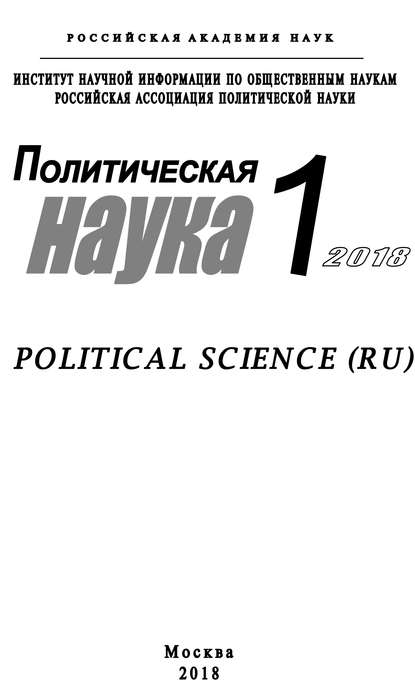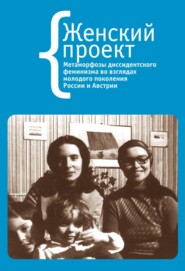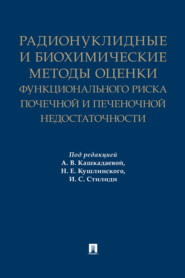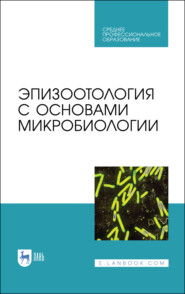По всем вопросам обращайтесь на: info@litportal.ru
(©) 2003-2024.
✖
Политическая наука №1 / 2018
Настройки чтения
Размер шрифта
Высота строк
Поля
Gigerenzer G. Mindless statistics // Journal of socio-economics. – Greenwich, Conn., 2004. – Vol. 33. – P. 587–606.
Gigerenzer G., Kraus S., Vitouch O. The null ritual: What you always wanted to know about significance testing but were afraid to ask // The SAGE handbook of quantitative methodology for the social sciences / D. Kaplan (ed.). –Thousand Oaks, CA: SAGE Publications, 2004. – P. 391–408.
Gill J. The insignificance of null hypothesis significance testing // Political research quarterly. – Salt Lake City, 1999. – Vol. 52, N 3. – P. 647–674.
Grofman B. Toward a science of politics? // European political science. – L., 2007. – Vol. 6. – P. 143–155.
King G., Tomz M., Wittenberg J. Making the most of statistical analysis: Improving interpretation and presentation // American journal of politics. – N.Y., 2000. – Vol. 44. – P. 341–355.
Kittel B. A crazy methodology? On the limits of macro-quantitative social science research // International sociology. – L., 2006. – Vol. 21. – P. 647–677.
Kittel B., Winner H. How reliable is pooled analysis in political economy? The globalization-welfare state nexus revisited // European journal of political research. – Malden, MA, 2005. – Vol. 44. – P. 269–293.
Kochen M., Deutsch K. Toward a rational study of decentralization // American political science review. – Washington, 1969. – Vol. 63. – P. 734–749.
Laakso M., Taagepera R. ‘Effective’ number of parties: A measure with application to West Europe // Comparative political studies. – Thousand Oaks, CA, 1979. – Vol. 23. – P. 3–27.
Lanchester F.L. Mathematics in warfare // The world of mathematics / J.R. Newman (ed.). – N.Y.: Simon and Schuster, 1956. – Vol. 4. – P. 2138–2157.
Longford N.T. Editorial: Model selection and efficiency – Is ‘Which model…?’ the right question? // Journal of the royal statistical society. Series A. – L., 2005. – Vol. 168. – P. 469–472.
McGregor J.P. Procrustus and the regression model: On the misuse of the regresson model // PS: Political science and politics. – Cambridge, 1993. – Vol. 26. – P. 801–804.
Misiunas R., Taagepera R. Years of dependence, 1940–1990. – L.: Hurst, 1993. – xvi, 400 p.
Misiunas R., Taagepera R. The Baltic states, Years of dependence, 1940–1980. – Los Angeles: Univ. of California press, 1983. – 333 p.
Sandholtz W., Taagepera R. Corruption, culture, and communism // International review of sociology. – Abingdon, 2005. – Vol. 15, N 1. – P. 109–131.
Schrodt P.A. Seven deadly sins of contemporary quantitative political analysis // Journal of peace research. – L., 2014. – Vol. 51, N 2. – P. 287–300.
Shugart M.S., Carey J.M. Presidents and Assemblies: Constitutional Design and Electoral Dynamics. – N.Y.: Cambridge univ. press, 1992. – 316 p.
Shugart M.S., Taagepera R. Votes from seats: Logical models of electoral systems. – Cambridge: Cambridge univ. press, 2017. – 358 p.
Taagepera R. The size of national assemblies // Social science research. – San Diego, 1972. – Vol. 1, N 4. – P. 385–401.
Taagepera R. Seats and votes: A generalization of the cube law of elections // Social science research. – San Diego, 1973. – Vol. 2, N 3. – P. 257–275.
Taagepera R. Why the trade / GNP ratio decreases with country size // Social science research. – San Diego, 1976. – Vol. 5. – P. 385–404.
Taagepera R. Softening without liberalization in the Soviet Union: The case of J?ri Kukk. – Lanham, MD: Univ. press of America, 1984. – x, 244 p.
Taagepera R. Estonia: Return to independence. – Boulder, CO: Westview press, 1993 a. – xv, 268 p.
Taagepera R. Running for president of Estonia: A political scientist in politics // PS: Political science and politics. – Cambridge, 1993 b. – Vol. 26, N 2. – P. 302–304.
Taagepera R. Beating the law of minority attrition // Electoral systems, minorities, and women in comparative perspective / W. Rule, J. Zimmermann (eds). –Westport, CN; L.: Greenwood, 1994. – P. 233–245.
Taagepera R. Expansion and contraction patterns of large polities: Context for Russia // International studies quarterly. – Oxford, 1997. – Vol. 41, N 3. – P. 475–504.
Taagepera R. Predicting party sizes: The logic of simple electoral systems. – Oxford: Oxford univ. press, 2007. – xxi, 314 p.
Taagepera R. Making social sciences more scientific: The need for predictive models. – Oxford: Oxford univ. press, 2008. – 264 p.
Taagepera R. A world population growth model: Interaction with Earth’s carrying capacity and technology in limited space // Technological forecasting and social change. – 2014. – Vol. 82. – P. 34–41.
Taagepera R. Logical models and basic numeracy in social sciences. – Tartu, 2015. – 297 p. – Mode of access: http://www.psych.ut.ee/stk/Beginners_Logical_Models.pdf (Accessed: 19.01.2018.)
Taagepera R., Allik M. Seat share distribution of parties: Models and empirical patterns // Electoral systems. – Ottawa, 2006. – Vol. 25. – P. 696–713.
Taagepera R., Colby B.N. Growth of western civilization: Epicyclical or exponential? // American anthropologist. – Menasha, Wis., 1979. – Vol. 4. – P. 907–912.
Taagepera R., Hosli M.O. National representation in international organizations: The seat allocation model implicit in the EU Council and parliament // Political studies. – Oxford, 2006. – Vol. 54, N 2. – P. 370–398.
Taagepera R., Kaskla E. The city-country rule: An extension of the rank-size rule // Journal of world-systems research. – Charlottesville, VA, 2001. – Vol. 7, N 2. – P. 157–174.
Taagepera R., K?nnap A. Distances among Uralic and other northern Eurasian languages // Linguistica Uralica. – Tallinn, 2005. – Vol. 41, N 3. – P. 161–181.
Taagepera R., Nurmia M. On the relations between half-life and energy release in alpha-decay. – Helsinki: Suomalainen Tiedeakatemia, 1961. – 16 p.
Taagepera R., Shugart M.S. Seats and votes: The effects and determinants of electoral systems. – New Haven: Yale univ. press, 1989. – 288 p.
Taagepera R., Sikk A. Institutional determinants of mean cabinet duration: The 4 th ECPR general conference, Univ. of Pisa, 6–8 September. – 2007. – Unpublished paper prepared for the conference.
Taagepera R., Sikk A. Parsimonious model for predicting mean cabinet duration on the basis of electoral system // Party politics. – Cambridge, 2010. – Vol. 16. – P. 261–281.
Taagepera R., Storey R.S., McNeill K.G. Breakdown strength of caesium iodide // Nature. – L., 1961. – Vol. 190. – P. 994–995.
Taagepera R., Williams F. Photoelectroluminescence of single crystals of manganese-activated zinc sulfide // Journal of applied physics. – Melville, NY, 1966. – Vol. 13. – P. 3085–3091.
Valentine J.C., Aloe A.M., Lau T.S. Life after NHST: How to describe your data without ‘p-ing’ everywhere // Basic and applied social psychology. – Mahwah, NJ, 2015. – Vol. 37, N 5. – P. 260–273.
Современная политическая наука: Кризис или развитие?
М.В. Ильин
(Тезисы для обсуждения) // Методологический семинар «Современная политическая наука: кризис или развитие?»
Организован кафедрой политологии и политического управления ИОН РАНХиГС совместно с РАПН и АПН 23 октября 2017 г., Москва, РАНХиГС
(Сокращенная стенограмма)
Начну с утверждения, что развитие немыслимо без кризисов, а бескризисная и межкризисная динамика крайне ограничена и по времени, и по возможностям. Собственно, такая динамика в строгом смысле развитием не является. Она лишь его сегмент, связанный с инерционным освоением потенциала, созданного прорывом из кризиса.
Мною используется лучшая, на мой взгляд, модель кризиса, которая разработана участниками так называемого Стэнфордского проекта[24 - См.: Окунев И.Ю. Стэнфордская модель кризиса развития // Полис. Политические исследования. – М., 2009. – № 3. – С. 136–144; Crisis, choice, and change. Historical studies of political development / G.A. Almond, S.C. Flanagan, R.J. Mundt (eds.). – Boston: Little, Brown, and Company, 1973. – 717 p.]. Она включает исходное положение, дисинхронизацию системы, попытки прорыва, успешный прорыв и ресинхронизацию системы. Между кризисами инерционная динамика, как правило, с быстрой и восходящей тенденцией, затем плато и после него нисходящая и замедляющаяся динамика, которая переходит в стагнацию, а затем кризис.
Инерционная фаза может, конечно, затягиваться, но не бесконечно. Это и является основным побуждающим мотивом постановки вопроса о будущем политической науки. Дело в том, что инерционная фаза явно затягивается. Еще в 1990?х я говорил студентам, что уже в ближайшее время они станут свидетелями и, возможно, участниками нового поворота в развитии сравнительной политологи. Главным резоном было то, что прошло уже два десятилетия после того, как начался «плюралистический» период проработки по деталям «кризисного» момента развития рубежа 1960–1970?х годов (Стэнфордский проект – лишь одна из составляющих этого импульса). Инерционная фаза слишком затянулась. Ресурс момента развития, как мне казалось, выработан.
Gigerenzer G., Kraus S., Vitouch O. The null ritual: What you always wanted to know about significance testing but were afraid to ask // The SAGE handbook of quantitative methodology for the social sciences / D. Kaplan (ed.). –Thousand Oaks, CA: SAGE Publications, 2004. – P. 391–408.
Gill J. The insignificance of null hypothesis significance testing // Political research quarterly. – Salt Lake City, 1999. – Vol. 52, N 3. – P. 647–674.
Grofman B. Toward a science of politics? // European political science. – L., 2007. – Vol. 6. – P. 143–155.
King G., Tomz M., Wittenberg J. Making the most of statistical analysis: Improving interpretation and presentation // American journal of politics. – N.Y., 2000. – Vol. 44. – P. 341–355.
Kittel B. A crazy methodology? On the limits of macro-quantitative social science research // International sociology. – L., 2006. – Vol. 21. – P. 647–677.
Kittel B., Winner H. How reliable is pooled analysis in political economy? The globalization-welfare state nexus revisited // European journal of political research. – Malden, MA, 2005. – Vol. 44. – P. 269–293.
Kochen M., Deutsch K. Toward a rational study of decentralization // American political science review. – Washington, 1969. – Vol. 63. – P. 734–749.
Laakso M., Taagepera R. ‘Effective’ number of parties: A measure with application to West Europe // Comparative political studies. – Thousand Oaks, CA, 1979. – Vol. 23. – P. 3–27.
Lanchester F.L. Mathematics in warfare // The world of mathematics / J.R. Newman (ed.). – N.Y.: Simon and Schuster, 1956. – Vol. 4. – P. 2138–2157.
Longford N.T. Editorial: Model selection and efficiency – Is ‘Which model…?’ the right question? // Journal of the royal statistical society. Series A. – L., 2005. – Vol. 168. – P. 469–472.
McGregor J.P. Procrustus and the regression model: On the misuse of the regresson model // PS: Political science and politics. – Cambridge, 1993. – Vol. 26. – P. 801–804.
Misiunas R., Taagepera R. Years of dependence, 1940–1990. – L.: Hurst, 1993. – xvi, 400 p.
Misiunas R., Taagepera R. The Baltic states, Years of dependence, 1940–1980. – Los Angeles: Univ. of California press, 1983. – 333 p.
Sandholtz W., Taagepera R. Corruption, culture, and communism // International review of sociology. – Abingdon, 2005. – Vol. 15, N 1. – P. 109–131.
Schrodt P.A. Seven deadly sins of contemporary quantitative political analysis // Journal of peace research. – L., 2014. – Vol. 51, N 2. – P. 287–300.
Shugart M.S., Carey J.M. Presidents and Assemblies: Constitutional Design and Electoral Dynamics. – N.Y.: Cambridge univ. press, 1992. – 316 p.
Shugart M.S., Taagepera R. Votes from seats: Logical models of electoral systems. – Cambridge: Cambridge univ. press, 2017. – 358 p.
Taagepera R. The size of national assemblies // Social science research. – San Diego, 1972. – Vol. 1, N 4. – P. 385–401.
Taagepera R. Seats and votes: A generalization of the cube law of elections // Social science research. – San Diego, 1973. – Vol. 2, N 3. – P. 257–275.
Taagepera R. Why the trade / GNP ratio decreases with country size // Social science research. – San Diego, 1976. – Vol. 5. – P. 385–404.
Taagepera R. Softening without liberalization in the Soviet Union: The case of J?ri Kukk. – Lanham, MD: Univ. press of America, 1984. – x, 244 p.
Taagepera R. Estonia: Return to independence. – Boulder, CO: Westview press, 1993 a. – xv, 268 p.
Taagepera R. Running for president of Estonia: A political scientist in politics // PS: Political science and politics. – Cambridge, 1993 b. – Vol. 26, N 2. – P. 302–304.
Taagepera R. Beating the law of minority attrition // Electoral systems, minorities, and women in comparative perspective / W. Rule, J. Zimmermann (eds). –Westport, CN; L.: Greenwood, 1994. – P. 233–245.
Taagepera R. Expansion and contraction patterns of large polities: Context for Russia // International studies quarterly. – Oxford, 1997. – Vol. 41, N 3. – P. 475–504.
Taagepera R. Predicting party sizes: The logic of simple electoral systems. – Oxford: Oxford univ. press, 2007. – xxi, 314 p.
Taagepera R. Making social sciences more scientific: The need for predictive models. – Oxford: Oxford univ. press, 2008. – 264 p.
Taagepera R. A world population growth model: Interaction with Earth’s carrying capacity and technology in limited space // Technological forecasting and social change. – 2014. – Vol. 82. – P. 34–41.
Taagepera R. Logical models and basic numeracy in social sciences. – Tartu, 2015. – 297 p. – Mode of access: http://www.psych.ut.ee/stk/Beginners_Logical_Models.pdf (Accessed: 19.01.2018.)
Taagepera R., Allik M. Seat share distribution of parties: Models and empirical patterns // Electoral systems. – Ottawa, 2006. – Vol. 25. – P. 696–713.
Taagepera R., Colby B.N. Growth of western civilization: Epicyclical or exponential? // American anthropologist. – Menasha, Wis., 1979. – Vol. 4. – P. 907–912.
Taagepera R., Hosli M.O. National representation in international organizations: The seat allocation model implicit in the EU Council and parliament // Political studies. – Oxford, 2006. – Vol. 54, N 2. – P. 370–398.
Taagepera R., Kaskla E. The city-country rule: An extension of the rank-size rule // Journal of world-systems research. – Charlottesville, VA, 2001. – Vol. 7, N 2. – P. 157–174.
Taagepera R., K?nnap A. Distances among Uralic and other northern Eurasian languages // Linguistica Uralica. – Tallinn, 2005. – Vol. 41, N 3. – P. 161–181.
Taagepera R., Nurmia M. On the relations between half-life and energy release in alpha-decay. – Helsinki: Suomalainen Tiedeakatemia, 1961. – 16 p.
Taagepera R., Shugart M.S. Seats and votes: The effects and determinants of electoral systems. – New Haven: Yale univ. press, 1989. – 288 p.
Taagepera R., Sikk A. Institutional determinants of mean cabinet duration: The 4 th ECPR general conference, Univ. of Pisa, 6–8 September. – 2007. – Unpublished paper prepared for the conference.
Taagepera R., Sikk A. Parsimonious model for predicting mean cabinet duration on the basis of electoral system // Party politics. – Cambridge, 2010. – Vol. 16. – P. 261–281.
Taagepera R., Storey R.S., McNeill K.G. Breakdown strength of caesium iodide // Nature. – L., 1961. – Vol. 190. – P. 994–995.
Taagepera R., Williams F. Photoelectroluminescence of single crystals of manganese-activated zinc sulfide // Journal of applied physics. – Melville, NY, 1966. – Vol. 13. – P. 3085–3091.
Valentine J.C., Aloe A.M., Lau T.S. Life after NHST: How to describe your data without ‘p-ing’ everywhere // Basic and applied social psychology. – Mahwah, NJ, 2015. – Vol. 37, N 5. – P. 260–273.
Современная политическая наука: Кризис или развитие?
М.В. Ильин
(Тезисы для обсуждения) // Методологический семинар «Современная политическая наука: кризис или развитие?»
Организован кафедрой политологии и политического управления ИОН РАНХиГС совместно с РАПН и АПН 23 октября 2017 г., Москва, РАНХиГС
(Сокращенная стенограмма)
Начну с утверждения, что развитие немыслимо без кризисов, а бескризисная и межкризисная динамика крайне ограничена и по времени, и по возможностям. Собственно, такая динамика в строгом смысле развитием не является. Она лишь его сегмент, связанный с инерционным освоением потенциала, созданного прорывом из кризиса.
Мною используется лучшая, на мой взгляд, модель кризиса, которая разработана участниками так называемого Стэнфордского проекта[24 - См.: Окунев И.Ю. Стэнфордская модель кризиса развития // Полис. Политические исследования. – М., 2009. – № 3. – С. 136–144; Crisis, choice, and change. Historical studies of political development / G.A. Almond, S.C. Flanagan, R.J. Mundt (eds.). – Boston: Little, Brown, and Company, 1973. – 717 p.]. Она включает исходное положение, дисинхронизацию системы, попытки прорыва, успешный прорыв и ресинхронизацию системы. Между кризисами инерционная динамика, как правило, с быстрой и восходящей тенденцией, затем плато и после него нисходящая и замедляющаяся динамика, которая переходит в стагнацию, а затем кризис.
Инерционная фаза может, конечно, затягиваться, но не бесконечно. Это и является основным побуждающим мотивом постановки вопроса о будущем политической науки. Дело в том, что инерционная фаза явно затягивается. Еще в 1990?х я говорил студентам, что уже в ближайшее время они станут свидетелями и, возможно, участниками нового поворота в развитии сравнительной политологи. Главным резоном было то, что прошло уже два десятилетия после того, как начался «плюралистический» период проработки по деталям «кризисного» момента развития рубежа 1960–1970?х годов (Стэнфордский проект – лишь одна из составляющих этого импульса). Инерционная фаза слишком затянулась. Ресурс момента развития, как мне казалось, выработан.

















